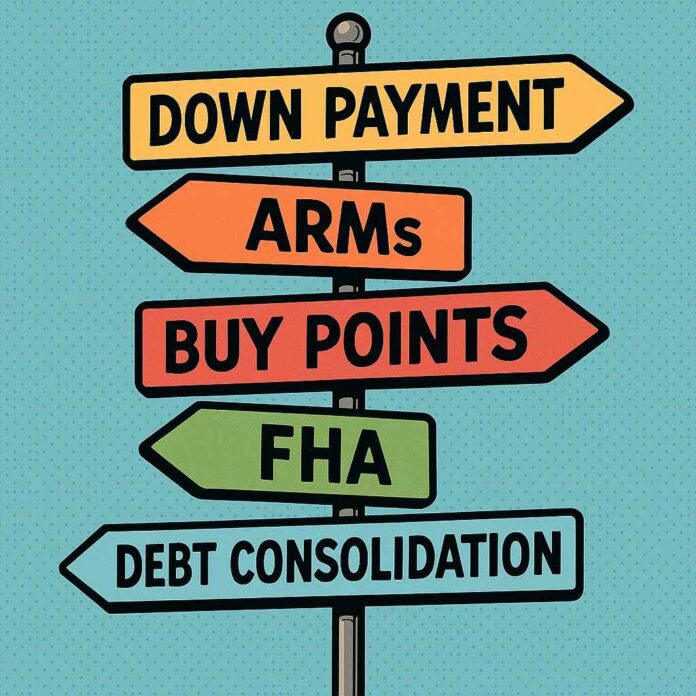The U.S. mortgage market is experiencing a welcome breather as rates tumble in anticipation of Federal Reserve action. For the week ending September 11, 2025, the average 30-year fixed-rate mortgage dropped to 6.35%, marking a 15-basis-point decline from the previous week—the largest weekly fall in over a year. This shift brings rates to their lowest level in nearly 12 months, down from a recent high of 6.50%. On September 12, refinance rates for the same term hovered around 6.3%, while 15-year fixed options fell to 5.2%, offering a glimmer of relief for homebuyers and refinancers alike.
This downturn comes amid cooling inflation data and robust expectations for a Fed rate cut as early as next week, potentially easing borrowing costs further. However, with forecasts suggesting rates will remain elevated through much of 2025—closing the year around 6.5%—borrowers must approach the market strategically. As a specialist in mortgage trends, I’ve seen how these fluctuations can make or break financial plans. Below, we break down the current environment and actionable strategies to optimize your position.
The Forces Driving Today’s Rates
Mortgage rates don’t move in isolation; they’re tethered to the 10-year Treasury yield, which has dipped below 4% recently due to softer labor market signals and recession fears. The Bureau of Labor Statistics’ latest jobs report, released on September 5, showed weaker-than-expected hiring, fueling bets on aggressive Fed easing—up to four or five cuts through mid-2026. This has injected optimism into the housing sector, where high rates have sidelined buyers and locked in homeowners with sub-4% loans from the pandemic era.
Yet, the relief is tempered. Experts predict only modest declines, with 30-year fixed rates potentially stabilizing between 6.2% and 6.5% by year-end, influenced by persistent inflation and geopolitical tensions. Home sales have languished near multi-decade lows, with existing-home transactions down 20% year-over-year, underscoring the drag from affordability challenges. For mortgages, this means rates could rebound if the Fed’s cuts underwhelm or if economic data surprises to the upside.
Strategies for Homebuyers in a High-Rate Era
With rates still double the lows of 2021, prospective buyers face a tougher climb. But savvy moves can mitigate the sting:
- Shop Around Aggressively: Don’t settle for the first quote. Rates can vary by up to 0.5% across lenders, potentially saving thousands over the loan’s life. Use online aggregators and consult multiple brokers to compare not just rates, but fees and closing costs. In today’s market, locking in a rate now could protect against volatility, especially if Fed cuts don’t materialize as hoped.
- Consider Adjustable-Rate Mortgages (ARMs): If you plan a short-term stay (under seven years), an ARM’s initial fixed rate—often 0.5-1% below fixed options—could be ideal. Current 5/1 ARMs are averaging around 5.8%, offering lower payments upfront before adjusting. However, brace for potential hikes; with rates forecasted to ease only gradually, this isn’t a long-term gamble.
- Buy Points to Lower Your Rate: Paying upfront “points” (1% of the loan amount per point) can shave 0.25% off your rate. At 6.35%, one point might drop it to 6.1%, recouping costs in 3-5 years for most borrowers. This is particularly worthwhile if you anticipate staying put amid a sluggish resale market.
- Boost Your Credit and Down Payment: Lenders reward strong profiles. A credit score above 760 could secure rates 0.5% lower than sub-700 scores. Similarly, putting down 20% avoids private mortgage insurance (PMI), which adds 0.5-1% to effective costs. If rates stay high, saving for a larger down payment—aiming for 10-20%—enhances affordability.
Refinancing Opportunities for Existing Homeowners
For the 80% of homeowners with rates below 5%, the “lock-in effect” persists, but recent drops open doors. If your current rate exceeds 6.5%, refinancing could save $200+ monthly on a $400,000 loan. Key tactics:
- Monitor for Dips and Act Fast: With potential Fed cuts on the horizon, rates might test 6% by Q4 2025. Set alerts and refinance within 30-45 days of locking to minimize floating costs.
- Streamline with FHA or VA Options: If eligible, government-backed refinances like FHA Streamline or VA IRRRL skip appraisals and income verification, reducing fees to under 1% of the loan. Ideal for quick swaps in a high-rate environment.
- Cash-Out Refi for Debt Consolidation: If equity is strong (median home values up 5% this year), tap it to pay off high-interest credit card debt (averaging 20%). But calculate break-even: At current rates, it takes 2-3 years to offset closing costs.
Looking Ahead: A Cautious Optimism
Forecasts for 2025 paint a mixed picture: Morgan Stanley sees rates easing to 6% by mid-year if yields follow suit, potentially boosting home prices modestly. However, persistent supply shortages and election-year uncertainties could keep them pinned higher. For renters eyeing purchase, building reserves now is crucial—affordability indices show monthly payments 40% above 2020 levels.
In this pivotal moment, the dip to 6.35% signals opportunity, but high rates are the new normal. Borrowers who prioritize credit health, shop diligently, and align loans with life plans will fare best. Consult a mortgage advisor to tailor these strategies—your financial future in housing depends on it.
Disclaimer: The information provided here is for educational and informational purposes only and should not be interpreted as financial advice, investment recommendations, or trading guidance. Markets involve risk, and past performance is not indicative of future results. You should always conduct your own research and consult with a qualified financial advisor before making any investment decisions. By acting, you accept full responsibility for your choices.





